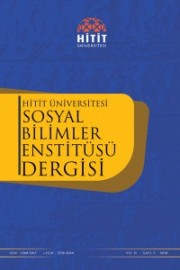NET VE BULANIK SINIRLAR: FRANSA, ALMANYA VE AMERİKA BİRLEŞİK DEVLETLERİNDE İKİNCİ NESİL ASİMİLE VE DIŞLANMASI
BRIGHT VS. BLURRED BOUNDARIES: SECOND GENERATION ASSIMILATION AND
EXCLUSION IN FRANCE, GERMANY, AND THE UNITED STATES
Author(s): Richard AlbaContributor(s): Özcan Güngör (Translator)
Subject(s): Evaluation research, Social differentiation, Sociology of Culture, Migration Studies, Ethnic Minorities Studies, Sociology of Religion
Published by: Hitit Üniversitesi Sosyal Bilimler Enstitüsü
Keywords: Assimilation; Ethnic Boundaries; Race; Religion; Second Generation; Social Exclusion;
Summary/Abstract: In all emigrant societies, a social separation between emigrants and both second generation, and natives, is imposed by the ethnic majority and this separation creates a sociologically complex fault line. Built on comparison and contrast, this article offers a good opportunity to understand the concepts associated with boundary processes of second-generation Mexicans in the U.S., North Africans in France, and Turks in Germany, and the discrepancies among these generations. The difference between bright boundaries, which involve no ambiguity about membership, and blurred ones, which do, is hypothesized to be associated with the probability and processes of assimilation and exclusion. The authors have examined the major factors such as citizenship, religion, language, and race on the institutionalization of boundaries. The results of analysis lead to the conclusion that blurred boundaries generally characterize the situation of Mexicans in the U.S., and bright boundaries characterize the European context for Muslim groups although race the great, is not understood well.
Journal: Hitit Üniversitesi Sosyal Bilimler Enstitüsü Dergisi
- Issue Year: 6/2013
- Issue No: 1
- Page Range: 87-111
- Page Count: 25
- Language: Turkish

